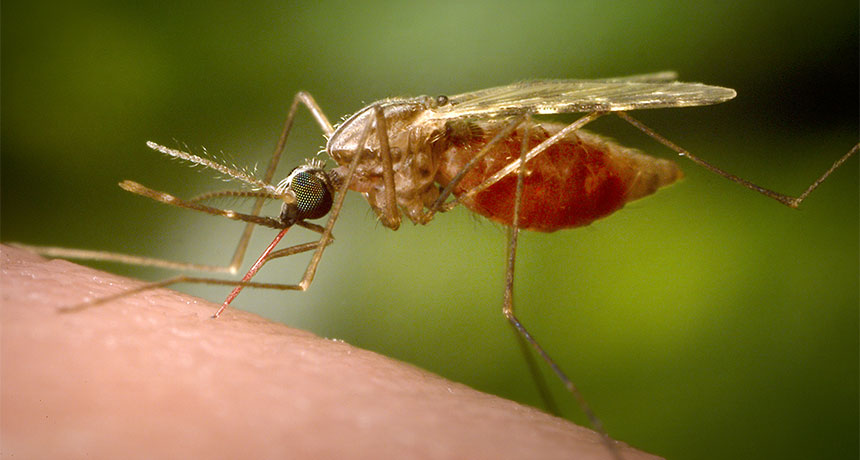In malaria battle, indoor bug spraying has unintended consequence

AUSTIN, TEXAS — Success of an indoor spraying campaign to combat malaria on an African island may have started a worrisome trend in local mosquito evolution.
Since 2004, using pesticides inside homes has eradicated two of four malaria-spreading Anopheles mosquitoes on Bioko Island in Equatorial Guinea, vector biologist Jacob I. Meyers of Texas A&M University in College Station reported June 19 at the Evolution 2016 meeting. Numbers of the remaining two species have dropped. Yet the dregs of these supposedly homebody species are showing a rising tendency to fly outdoors looking for a blood meal, Meyers and colleagues cautioned. The results were also reported April 26 in Malaria Journal.
If the mosquitoes continue to shift toward outside bloodsucking, the campaign could lose some of its bite. Repeated treatments of indoor walls with pesticides that kill mosquitoes clinging to them may not be so effective if the pests venture from home.
What’s changing about these mosquitoes remains to be seen, but this looks like more than simple opportunism, Meyers said. Bed nets are not common, so Meyers doubts that the mosquitoes fly outdoors because no one is available to bite indoors. Nor does their reaction look like escape from repellent pesticides: Outdoor biting didn’t consistently rise after a spraying. The next step is to check for a genetic basis for the shift. Lots of research has explored physiology that lets insects resist pesticides, Meyers said, but the onset of possible resistant behavior has barely been explored.